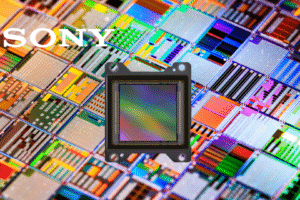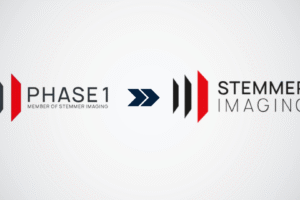The global machine vision market is projected to grow from $11.61 billion in 2024 to $22.59 billion in 2032. A significant portion of that growth will come from the Asia Pacific region.
Analysts expect the Asia Pacific region will register the highest compound annual growth (CAGR) during their forecast period. Learn what’s fueling the growth, how countries in the Asia Pacific region are using machine vision systems, and what the future holds.
What’s Fuelling the Growth of Machine Vision in the Asia Pacific Region?
There are a few factors fuelling the growth of machine vision systems in the Asia Pacific region.
Industry 4.0
The first factor is Industry 4.0. We’re in the midst of the Fourth Industrial Revolution, one that centers on digitizing the manufacturing sector. It’s driven by data and connectivity, analytics, and robotics.
Companies in the Asia Pacific region have invested heavily in automation and robotics to increase the efficiency of manufacturing.

Countries Vying for Regional Manufacturing Dominance
China, India, and Japan are among the countries in the Asia Pacific region vying for manufacturing dominance. Companies in the Asia Pacific region understand that to reach that goal, they must invest in systems that enable them to be more productive and efficient. It’s about putting the principles of Industry 4.0 into practice.
Machine vision systems enable human workers to become more effective. With a machine vision solution, employees can easily tell whether products on the assembly line have a consistent appearance and whether those products have the right measurements. Using these systems saves untold time, effort, and money.
While governments aren’t specifically promoting the use of machine vision systems, they play into government strategies for greater industrial development. Thailand, Malaysia, and Singapore have all launched initiatives to modernize industrial capabilities, and machine vision fits into these plans perfectly.
A Greater Need for Quality Control
One of the benefits of machine vision systems is that they can catch defects or problems that human eyes alone can’t.
They can detect minute cracks, fractures, and other issues in a wide variety of products that human employees can’t see. The addition of machine vision systems allows workers to boost their efficiency and create safer products.
Lower Costs, Higher Quality
Machine vision systems have also never been less expensive or higher quality. The decrease in price and the enhanced reliability of machine vision systems’ output make these systems more accessible and dependable than ever before.

Use Cases for Machine Vision Systems in the Asia Pacific Region
What use cases exist for machine vision systems in this region?
In Japan, machine vision systems are most commonly used in high-precision manufacturing (such as automotive, electronics, semiconductors, and robotics. The drivers for machine vision adoption aren’t surprising: there’s a need to maintain quality control and consistency, as well as the imperative for greater efficiency. However, Japan faces challenges other countries in this region don’t. Specifically, its population is aging and there’s a labor shortage.
The use case in China is similar to that of Japan, although China doesn’t specialize in high-precision manufacturing. It’s become the world’s manufacturing hub, serving as home to a diverse range of industries (electronics, automotive, semiconductor, pharmaceuticals, and consumer goods, to name a few). Much like in Japan, machine vision systems enable product quality and safety as well as regulatory compliance. These things have been issues in the past for China—in 2008, 300,000 children were sickened and at least six died after drinking powdered milk contaminated with the industrial chemical melamine.
South Korea offers another use case for machine vision technology. In this instance, the focus isn’t on the products being manufactured. South Korea has received significant amounts of foreign direct investment for smart factories. Machine vision systems play a vital role in smart manufacturing; they enable smart factories to carry out automation tasks thanks to the data they provide.
The Future of Machine Vision Systems in the Asia Pacific Region
Analysts predict the growth of machine vision in manufacturing in this region won’t slow down any time soon. The use cases for machine vision systems remain numerous and compelling. Analysts believe the number of use cases will expand. They see growth opportunities in pharmaceutical, packaging, automotive, and other industrial applications. In addition, smart factories will become more prevalent; South Korea is working towards building over 10,000 of these facilities.
While the future looks bright, machine vision market expansion in this region must overcome several hurdles. In Southeast Asia and China, a lack of expertise remains a barrier. To deploy and fine-tune machine vision systems, organizations need a blend of domain knowledge, software engineering skills, and AI capabilities, which are still in short supply across the region. Additionally, there’s a case of haves and have-nots in Southeast Asia—some organizations have the infrastructure to support the high-bandwidth, low-latency data exchange these systems require, while others don’t.
Analysts specializing in the Chinese machine vision market note an additional challenge: data processing and storage limitations. Machine vision systems generate large amounts of data, and that information must be processed then stored somewhere. Moreover, some of these images are in high resolution and require processing in real time. Those factors rely on robust computational power and storage infrastructure. The solution is to invest in high-performance computing systems and data storage solutions, although if the budget is lacking, the machine vision system won’t deliver ROI.
Will these challenges be solved in the next several years? The public and private sectors in the Asia Pacific region are committed to becoming industrial superpowers. While challenges might exist, these countries will work mightily to solve them in the coming years. As such, expect the Asia Pacific region to continue being a major machine vision systems consumer well into the future.
















